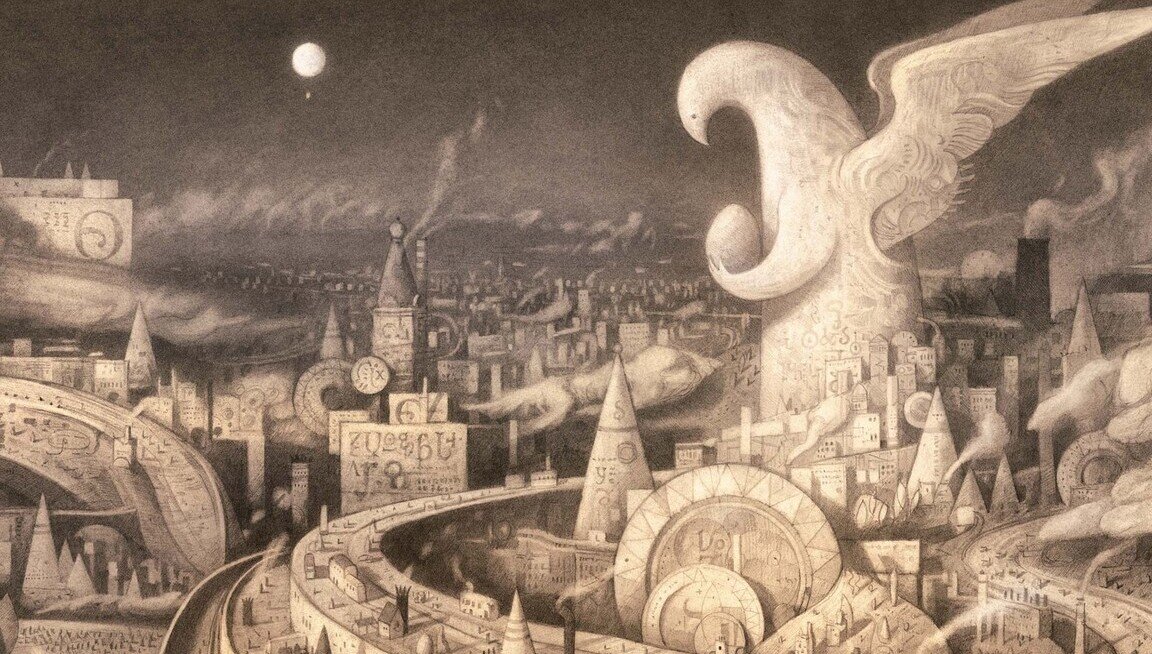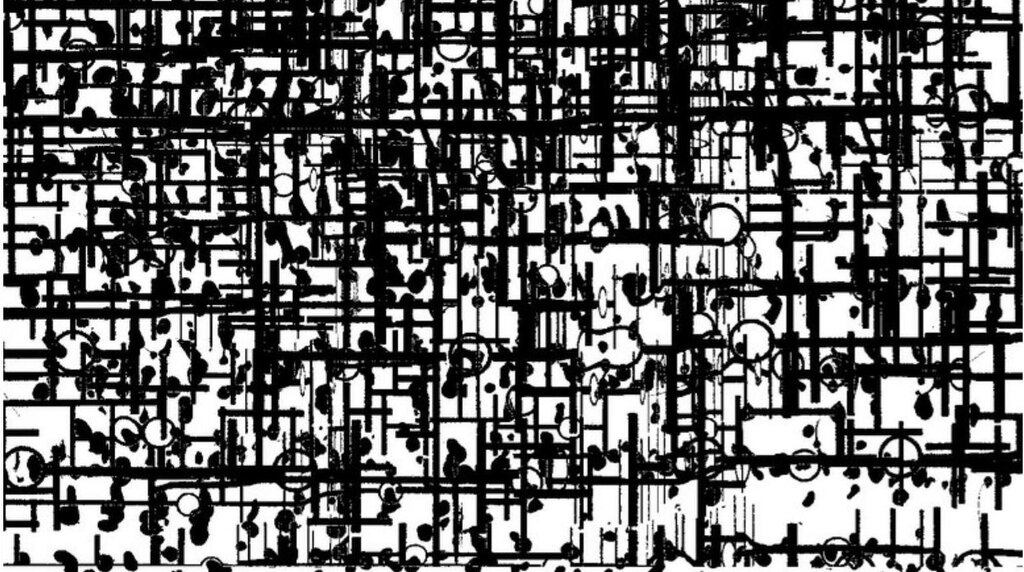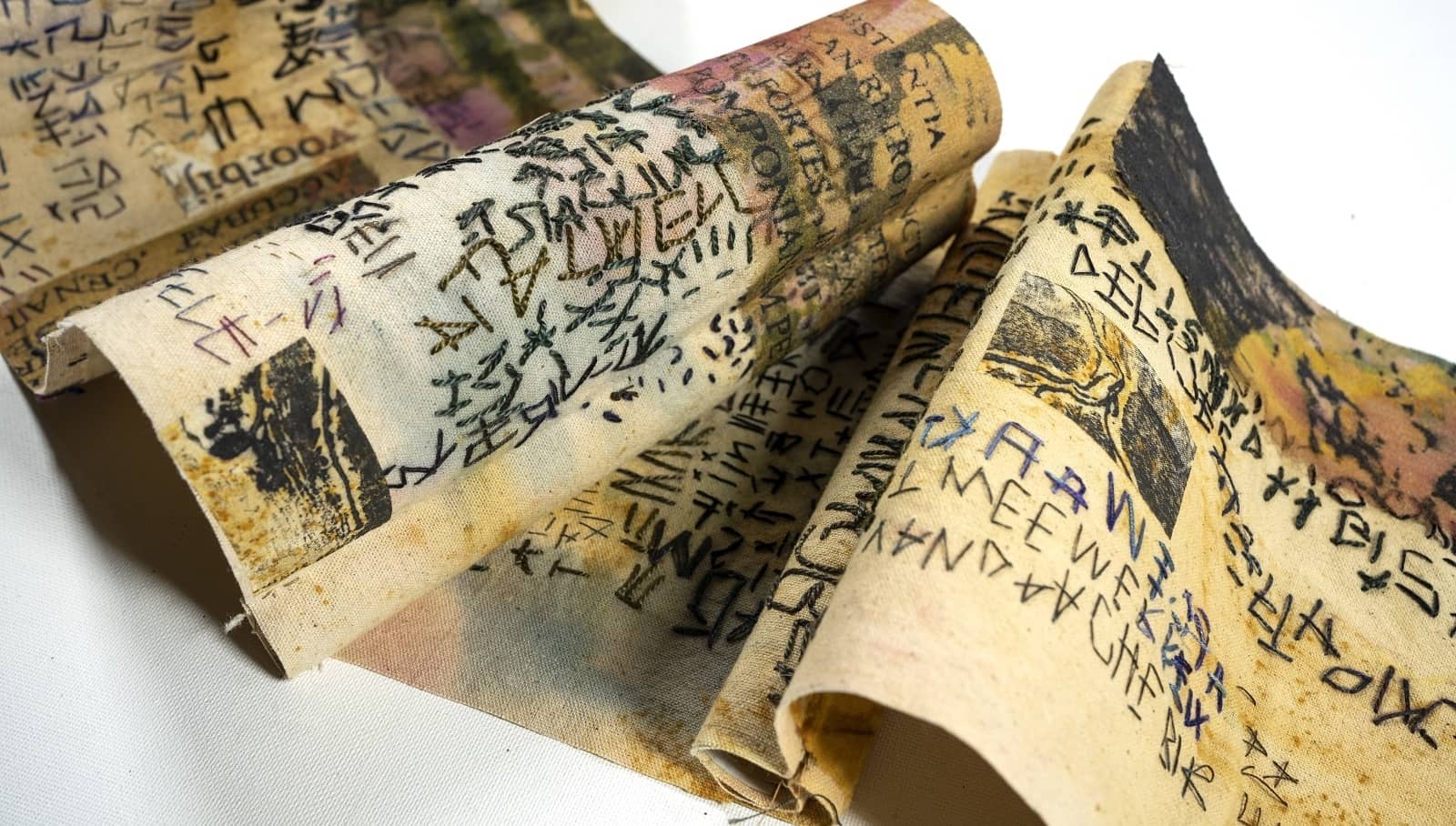Asemic Writing in Shaun Tan’s Graphic Novel ‘The Arrival’
The Arrival (2006) by Shaun Tan is a wordless graphic novel (which can be read here) that tells the story of an immigrant’s life in an imaginary world. It consists of small, medium, and large panels – as well as pages of full artwork – depicting a world that sometimes resembles our own but which…
View Post



